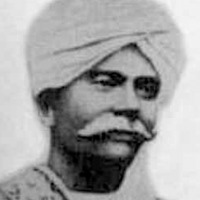- Index of Books 183877
-
-
Book Categories
-
Children's Literature1921
Drama961 Education336 Essays & Profiles1251 Fiction1387 Health71 History3235Humorous679 Journalism210 Language & Literature1757 Letters732 Life Style21
Medicine868 Movements290 Novel4293 Political328 Religions4064 Research & Criticism6477Short-story2699 Sketches264 Social issues115 Sufism / Mystic2115Text Books506 Translation4262Women's writings6636-
Book Categories
- Bait Bazi11
- Catalogue / Index5
- Couplets64
- Deewan1432
- Doha64
- Epics98
- Exegesis182
- Geet81
- Ghazal1075
- Haiku12
- Hamd44
- Humorous36
- Intikhab1540
- Keh mukarni6
- Kulliyat670
- Mahiya19
- Majmua4828
- Marsiya374
- Masnavi813
- Musaddas57
- Naat533
- Nazm1194
- Others68
- Paheli16
- Qasida178
- Qawwali19
- Qit'a60
- Quatrain290
- Quintuple17
- Rekhti12
- Remainders27
- Salaam33
- Sehra9
- shahr-Ashob, Hajw, Zatal Nama13
- Tareekh-Goi28
- Translation73
- Wasokht26
Profile of Master Ramchundra
Ramchundra's father, Rai Sunder Lal Mathur, was employed in the Indian revenue department and, at the time of Ramchundra's birth, he had been posted to Panipat which is a city in north west of India about 70 km from Delhi. In fact the family came from Delhi and they were of the Kayastha caste, that is a Hindu caste of scribes who worked in the Indian bureaucracy. Ramchundra's early education was at home, a standard for India at that time, but he also attended school in Panipat from the age of six. The family moved back to Delhi but Ramchundra's father Sunder Lal died in 1831 leaving the family in a very difficult financial position. Ramchundra's mother had to care for six young boys.
Ramchundra married a deaf and dumb girl in 1832 when he was eleven years old. This is a very early age for, at this time most Indian girls married around the age of fourteen, but for boys the age for marriage was around eighteen. This was an arranged wedding (the girl was the daughter of a wealthy businessman and came with a sizeable dowry) and Ramchundra only learnt after the wedding that his wife was deaf and dumb. That he married at this young age is almost certainly so that the family could benefit from the dowry.
In 1833 Ramchundra entered the English Government School in Delhi. He spent six years at this school but he learnt little mathematics there. In fact it was towards the end of these six years that he became interested in the topic and studied mathematics books at home. However, he did well at school and was awarded minor scholarships which helped out financially. Of course having to care for and support an invalid wife made things even harder and he found it difficult to purchase the mathematics texts he was so keen to read. He left the English Government School in 1839 and for two years he was employed as a writer. This not only meant he earned money to support his wife, but it also allowed him to help support the education of his five brothers.
Delhi College was set up by the East India Company in 1824 based on a college for literature, science and art that had been founded by the citizens of Delhi in 1792 on the site of an old Madrasa outside the Ajmeri gate. The College incorporated the English Government School which Ramchundra attended. Delhi College, originally intended to promote Oriental learning, soon added the teaching of astronomy and mathematics based on European methods. In 1841 Ramchundra competed for a scholarship and was awarded a senior scholarship of thirty rupees per month. He held this scholarship for three years, enabling him to complete his education, and then, in 1844, he was he was appointed as a teacher of European science in the Oriental department of Delhi College. We note that Delhi College today is known as Zakir Husain Delhi College and has been part of the University of Delhi since 1925Tagged Under
join rekhta family!
-
Children's Literature1921
-


